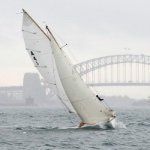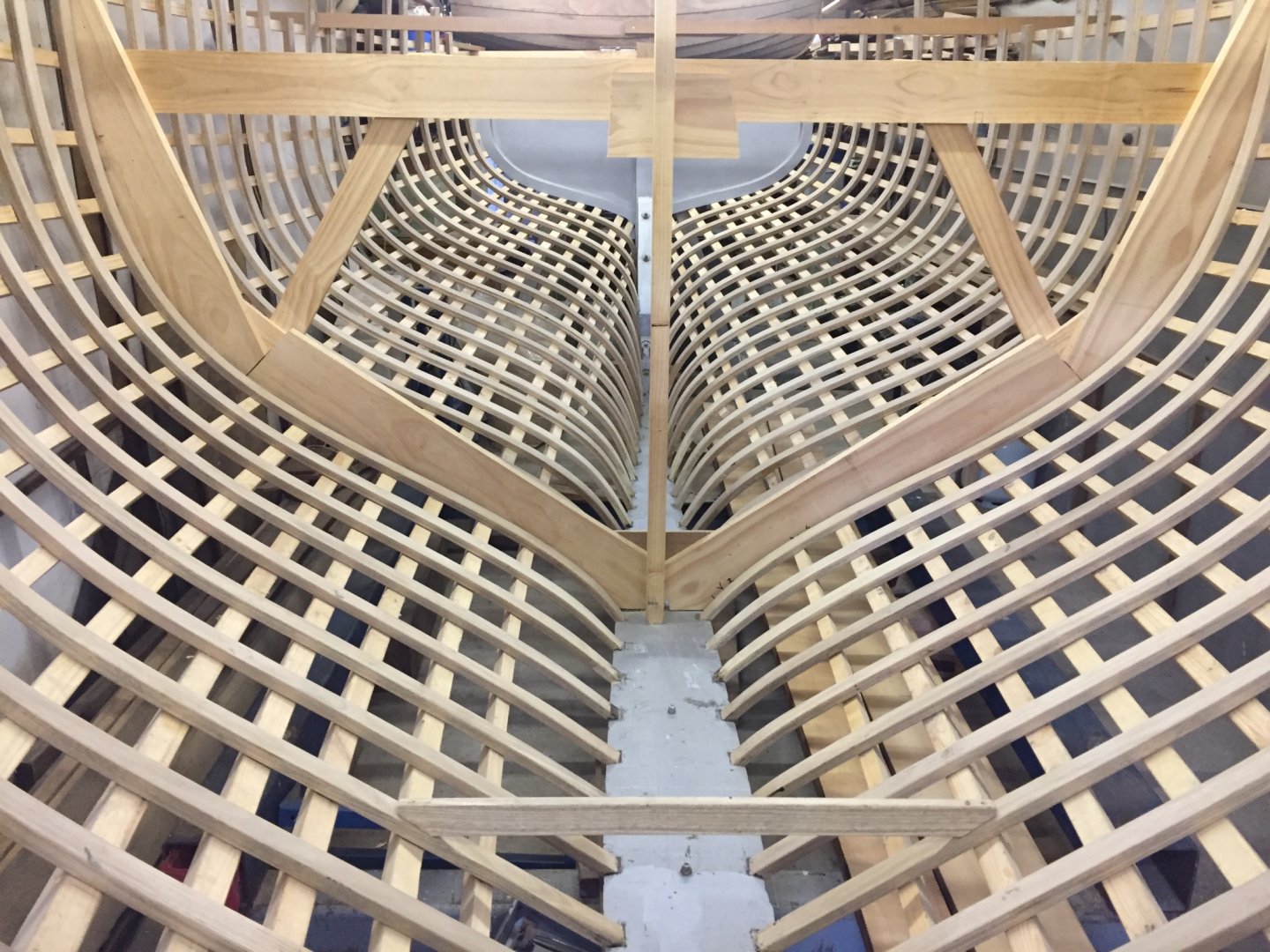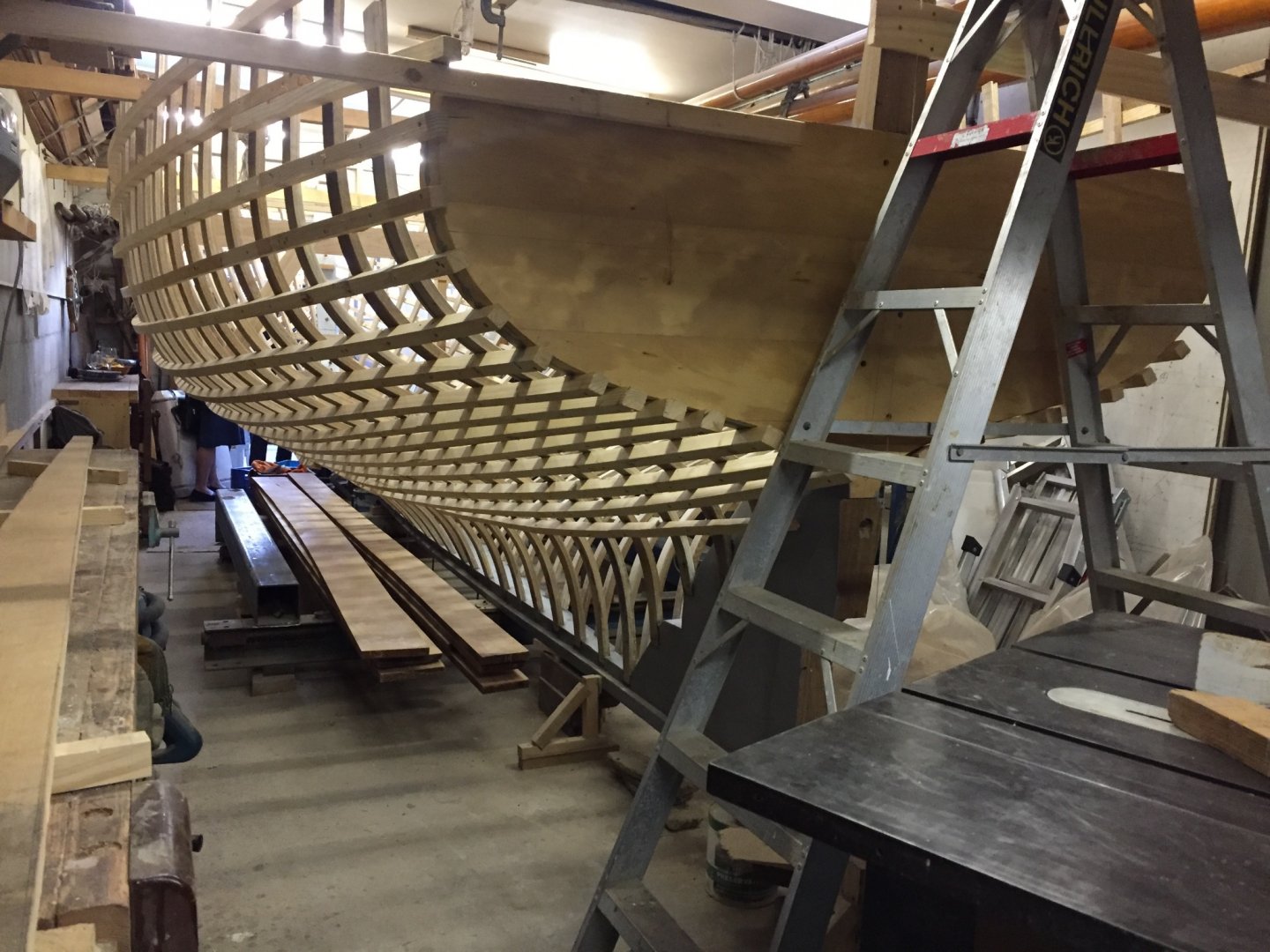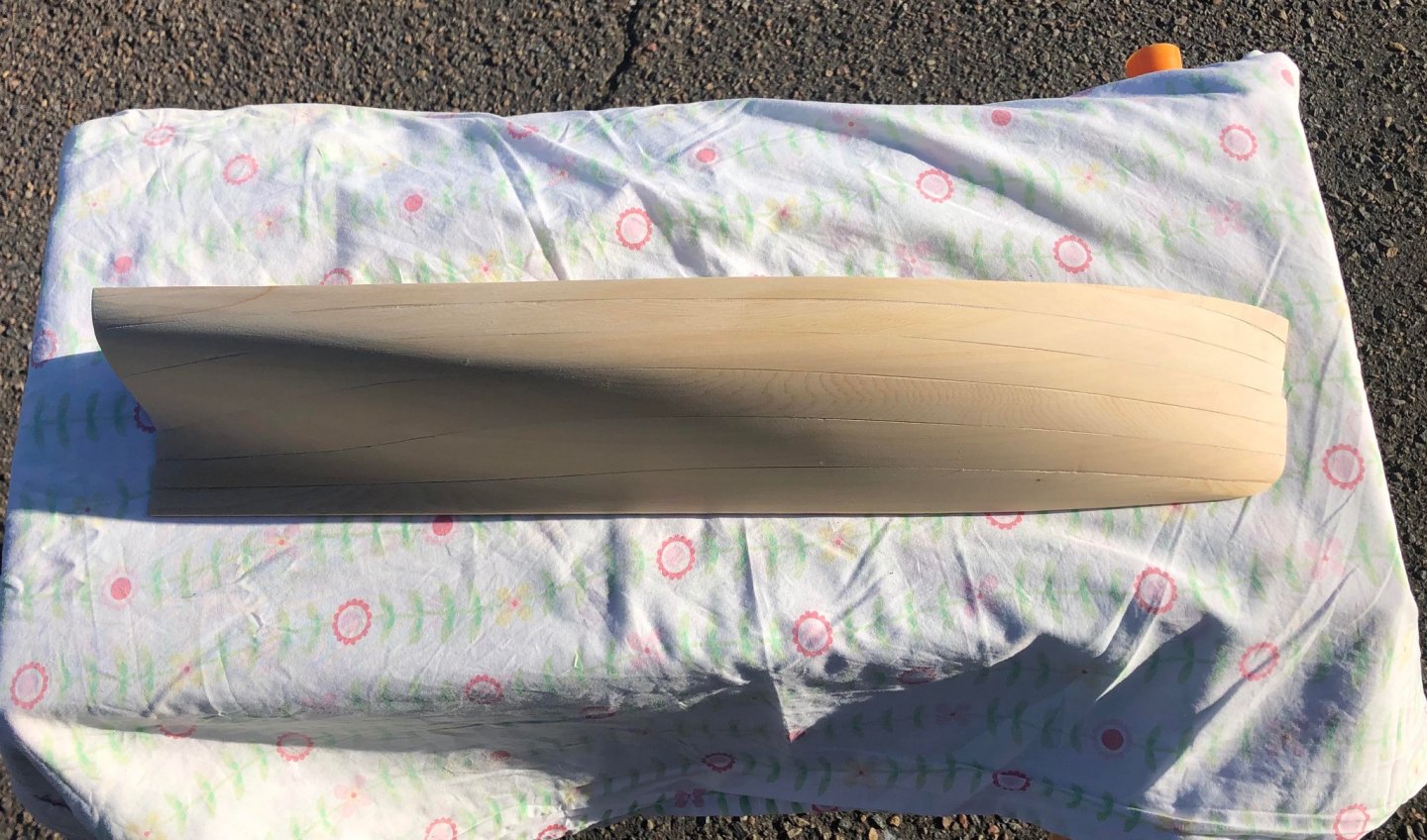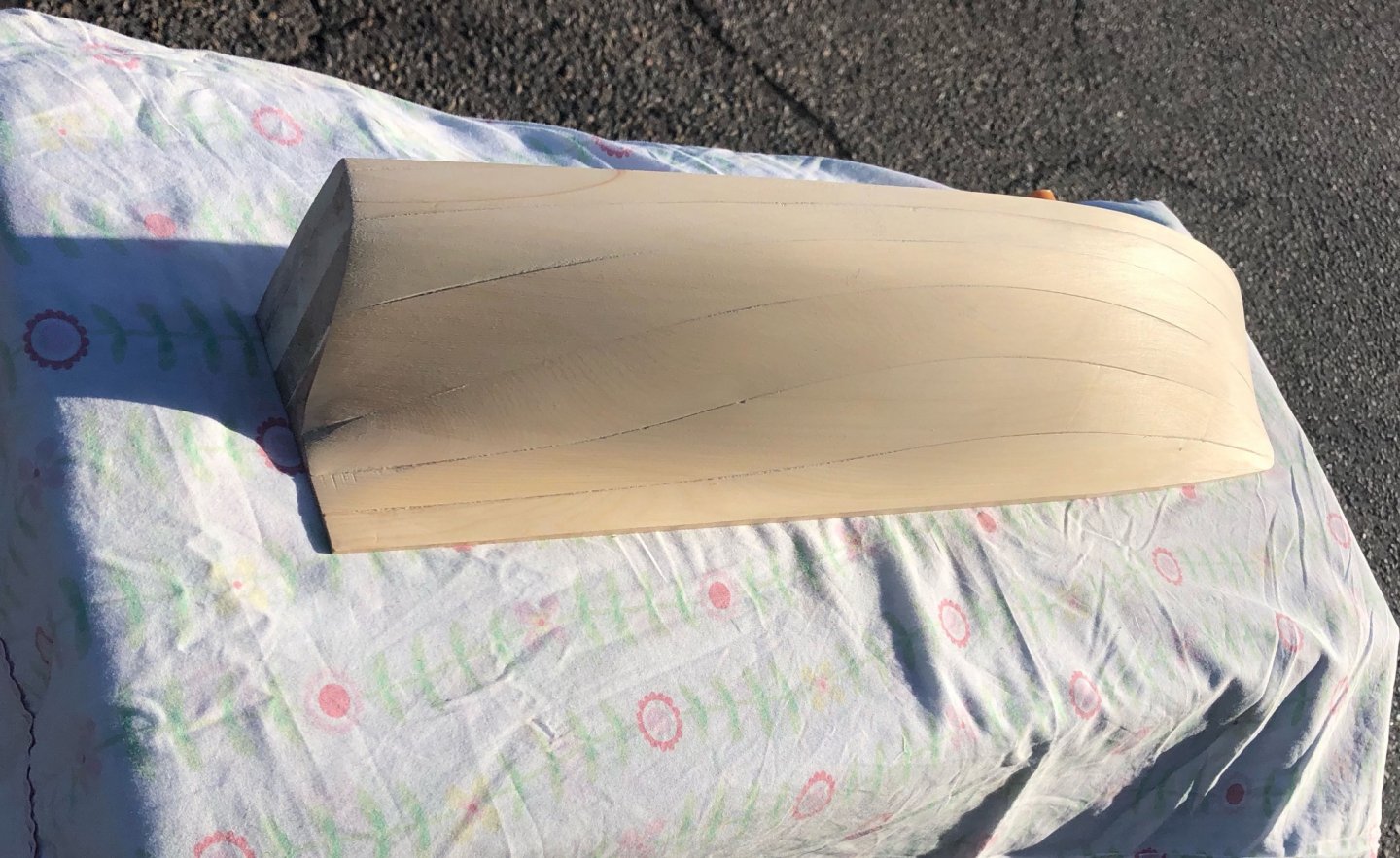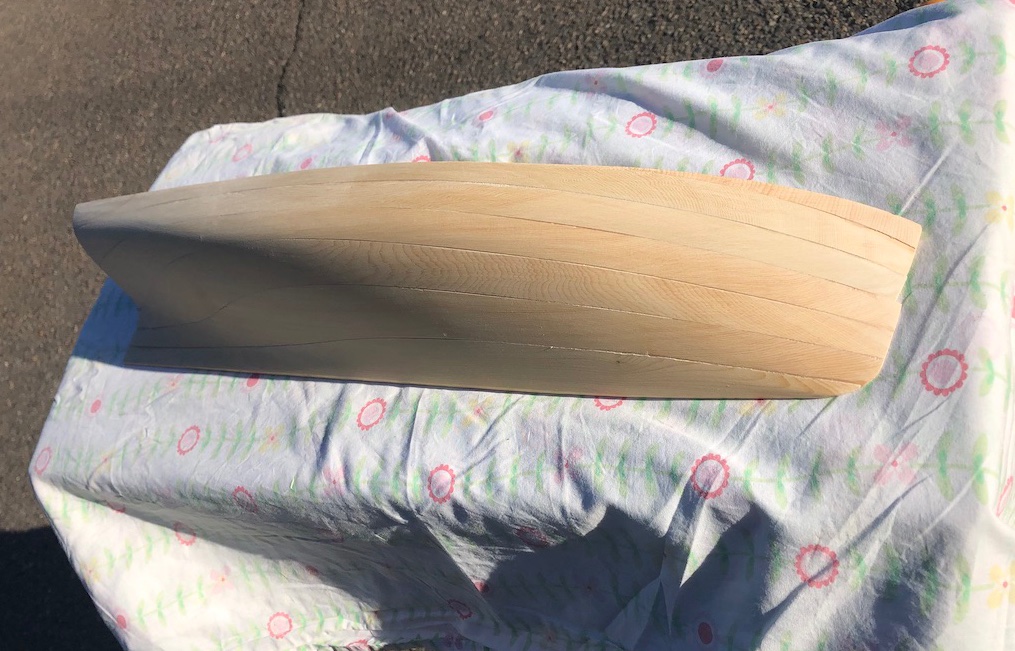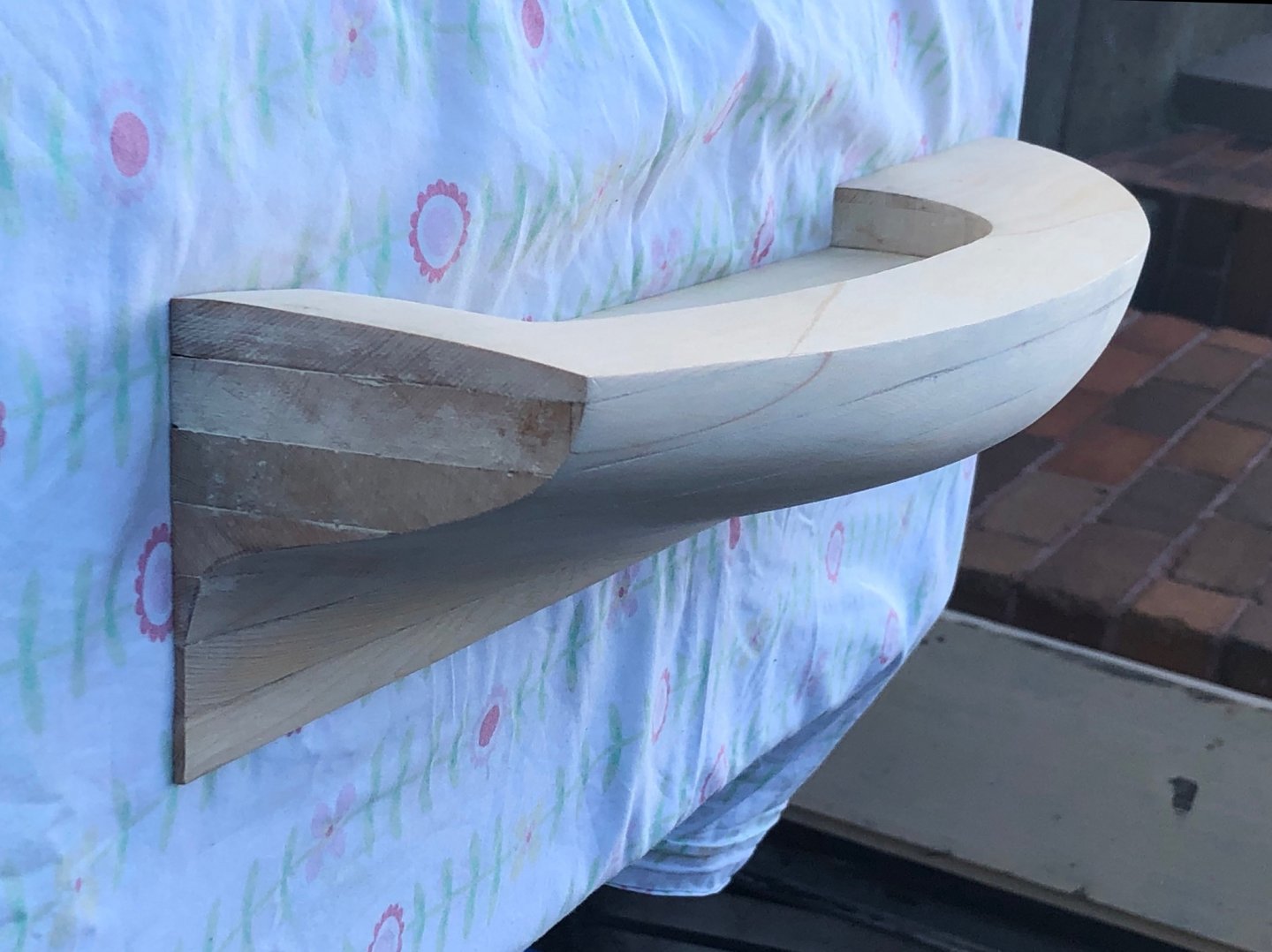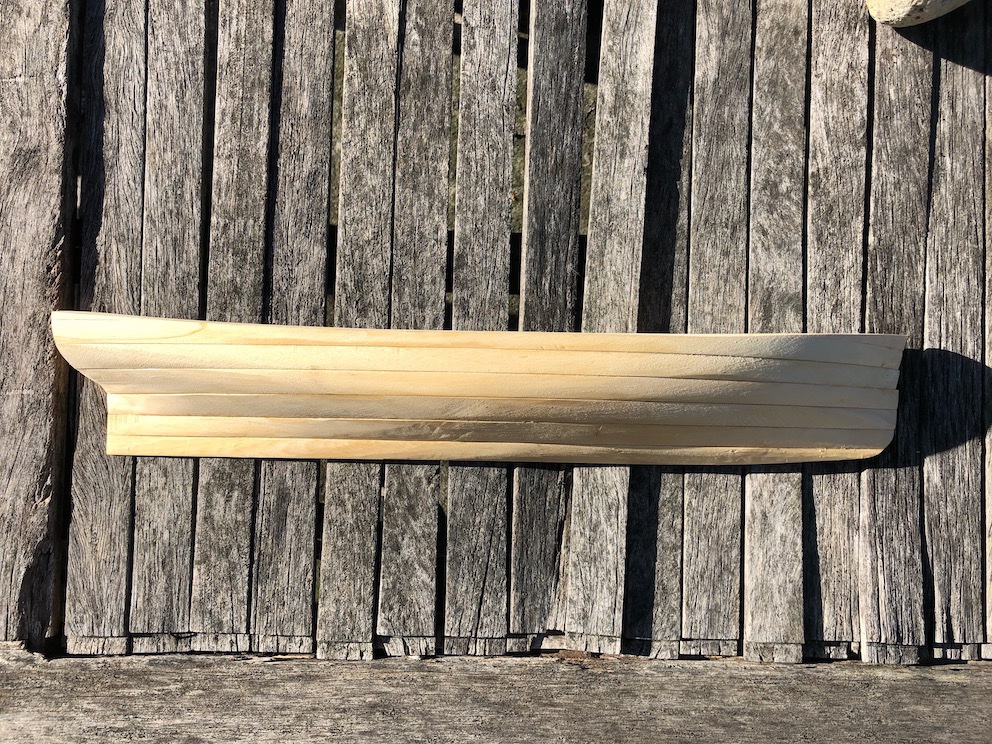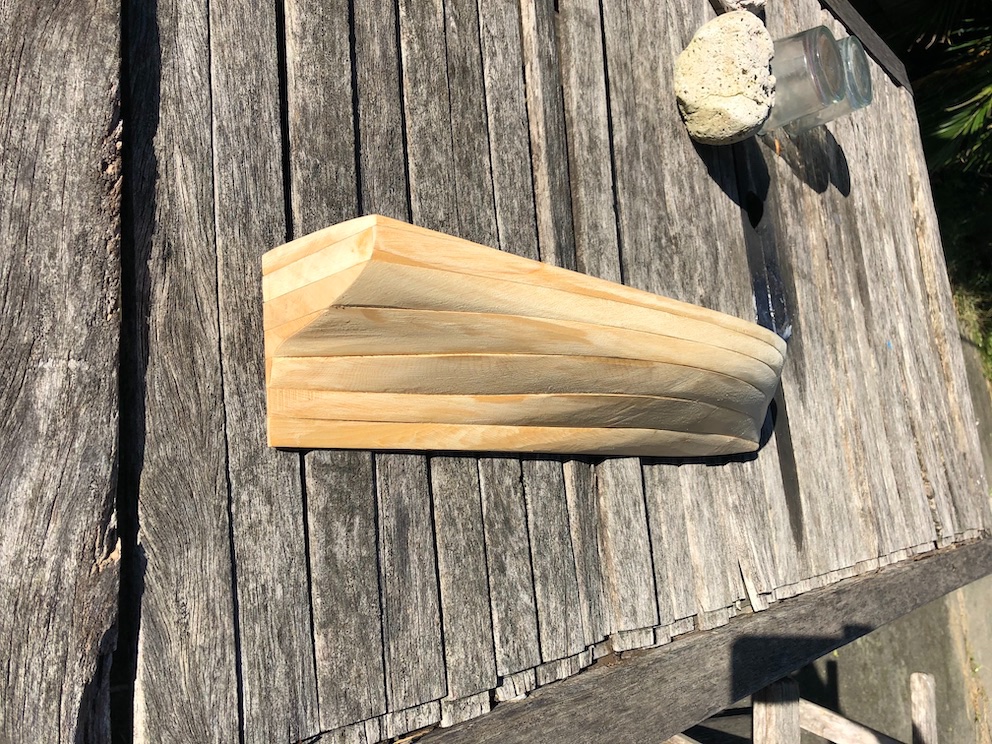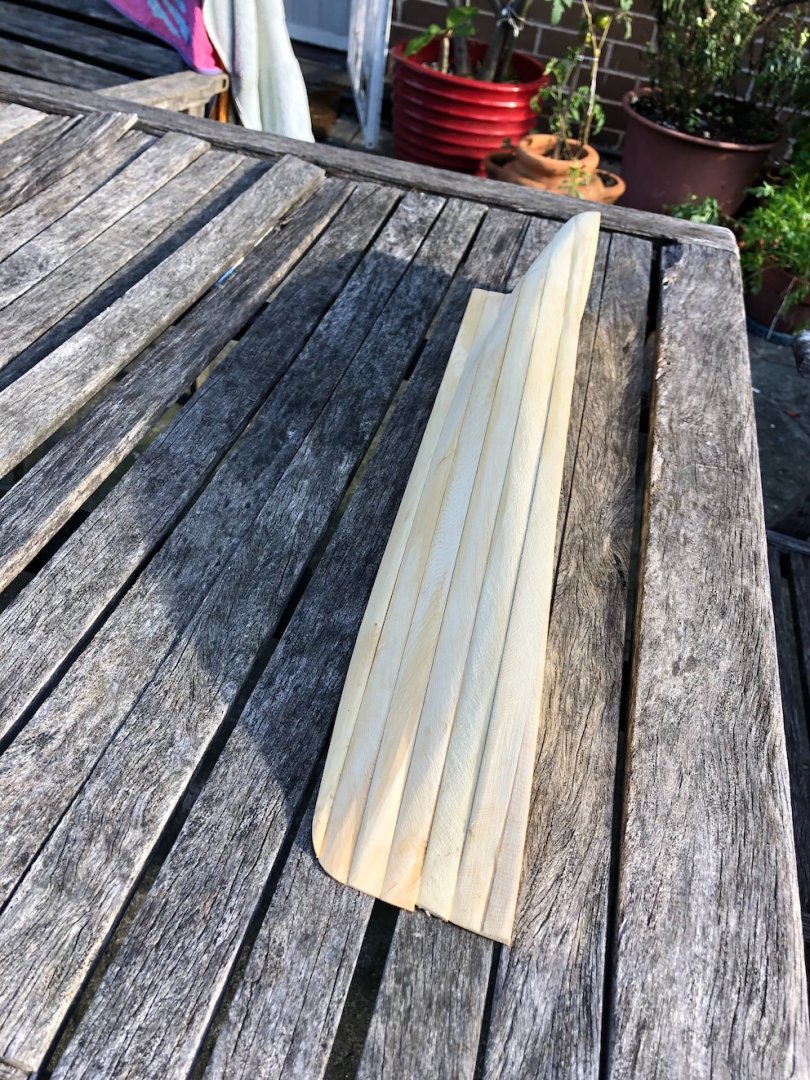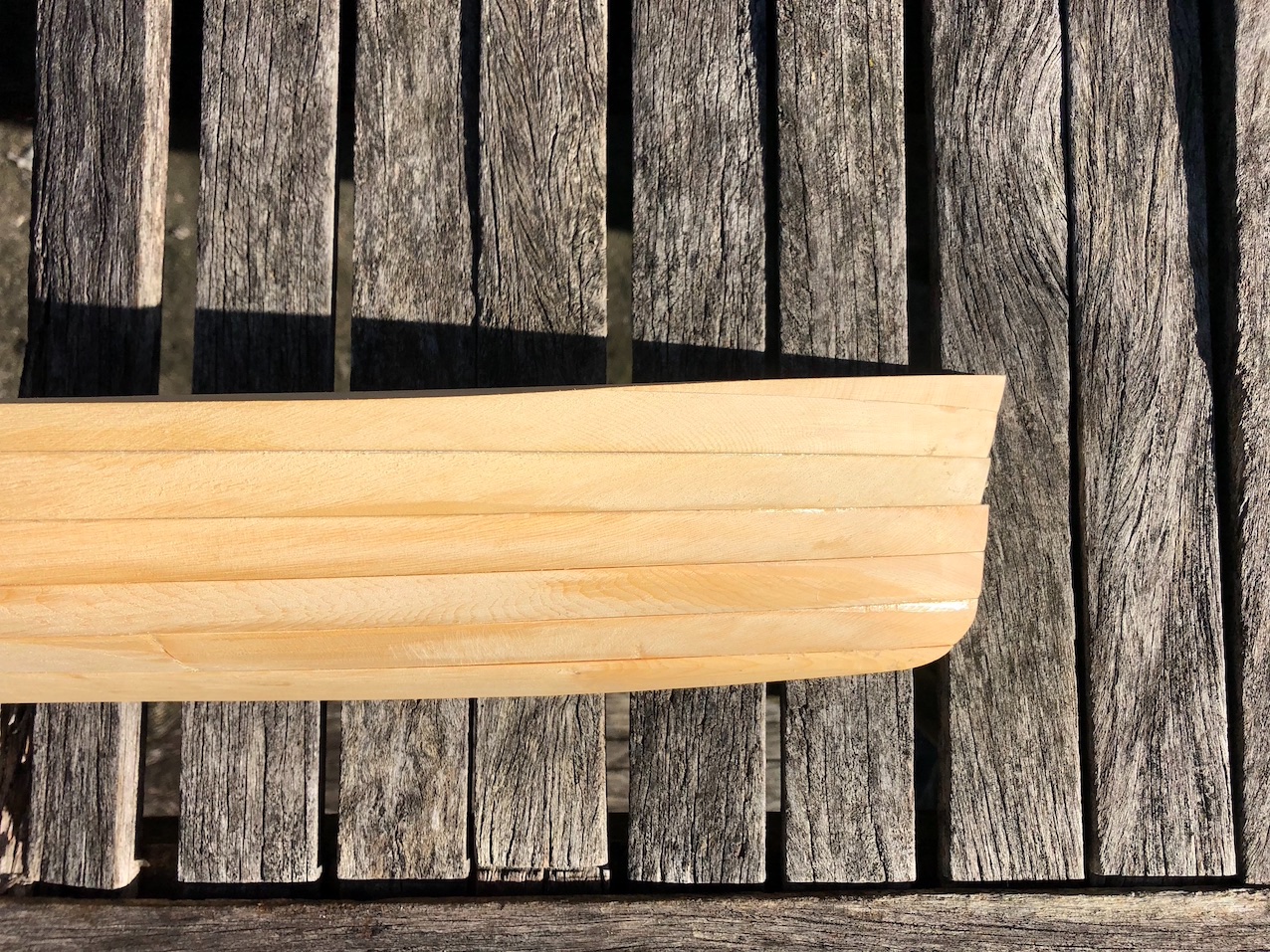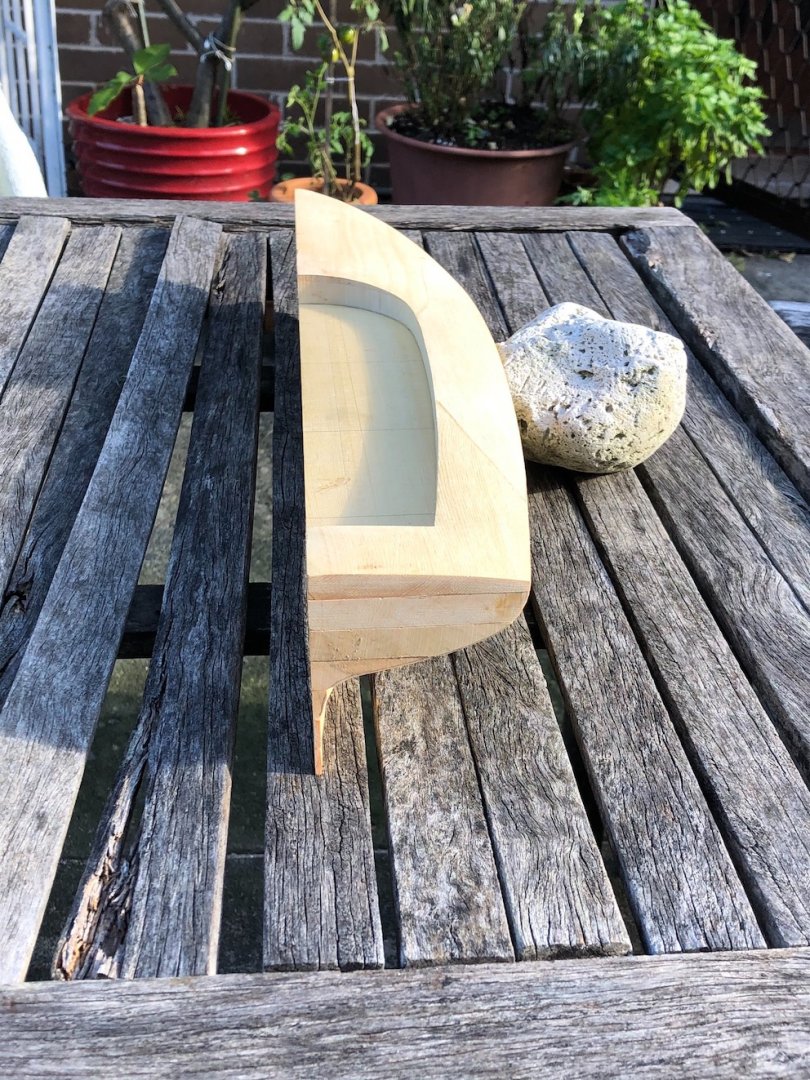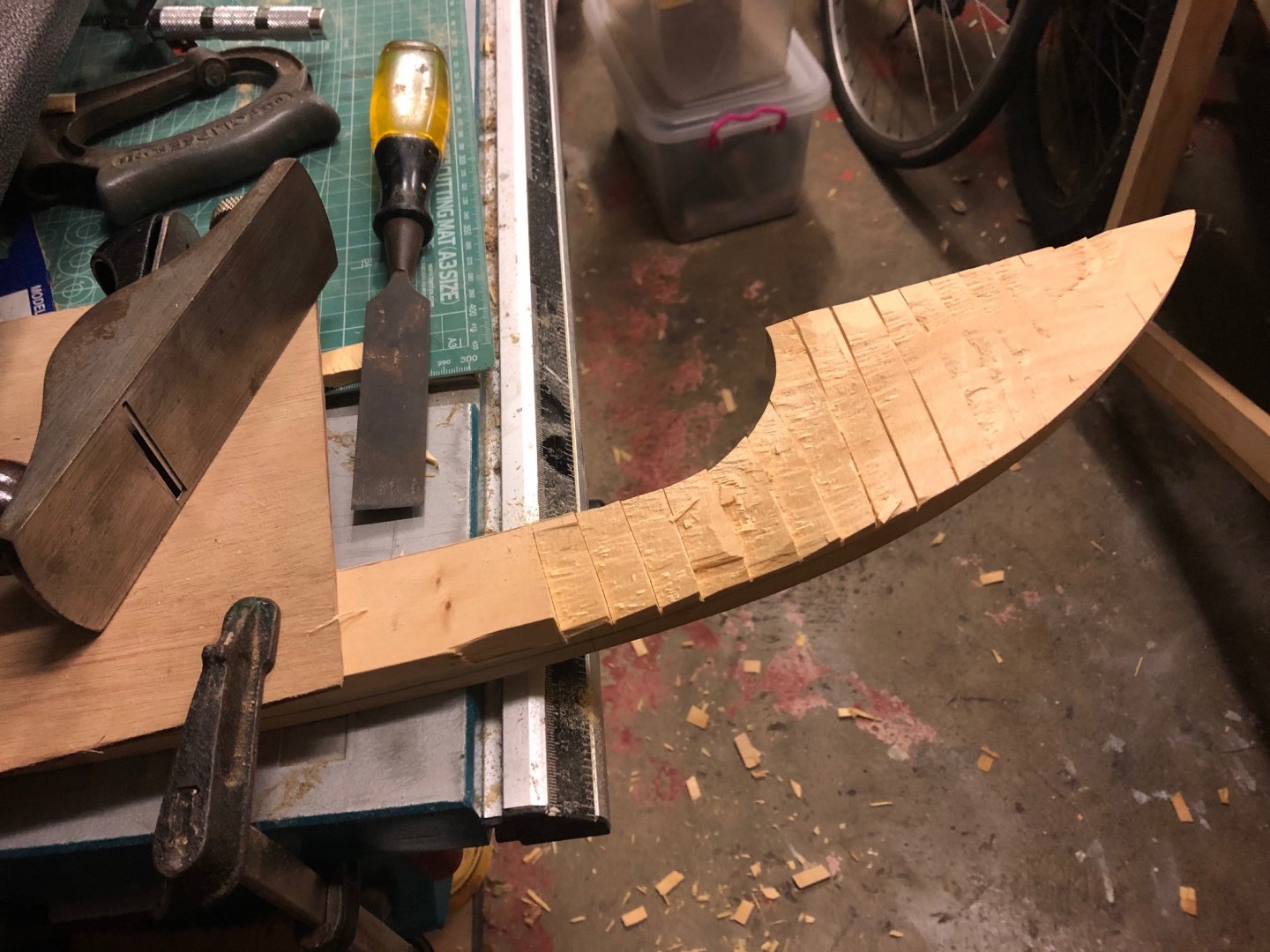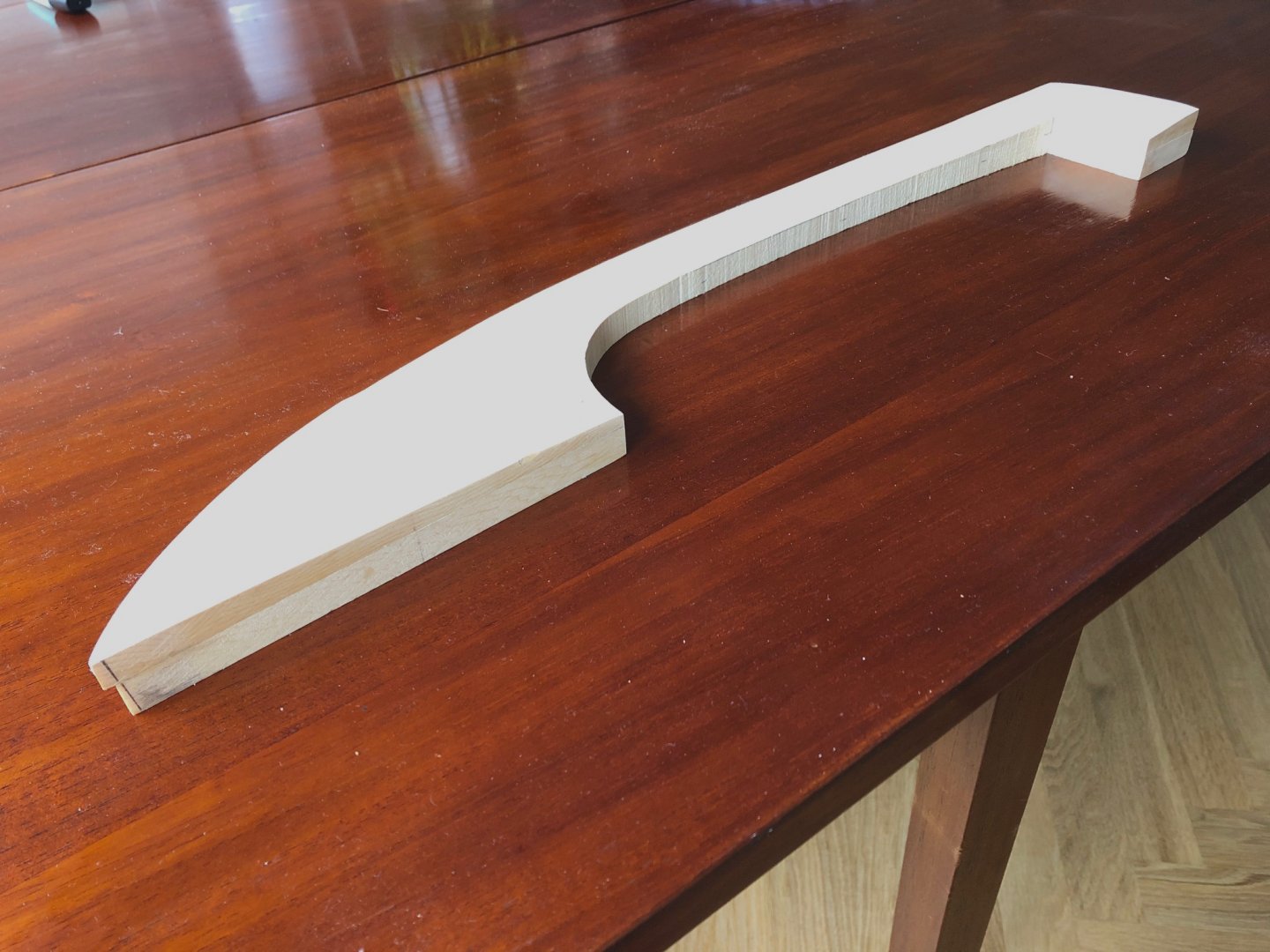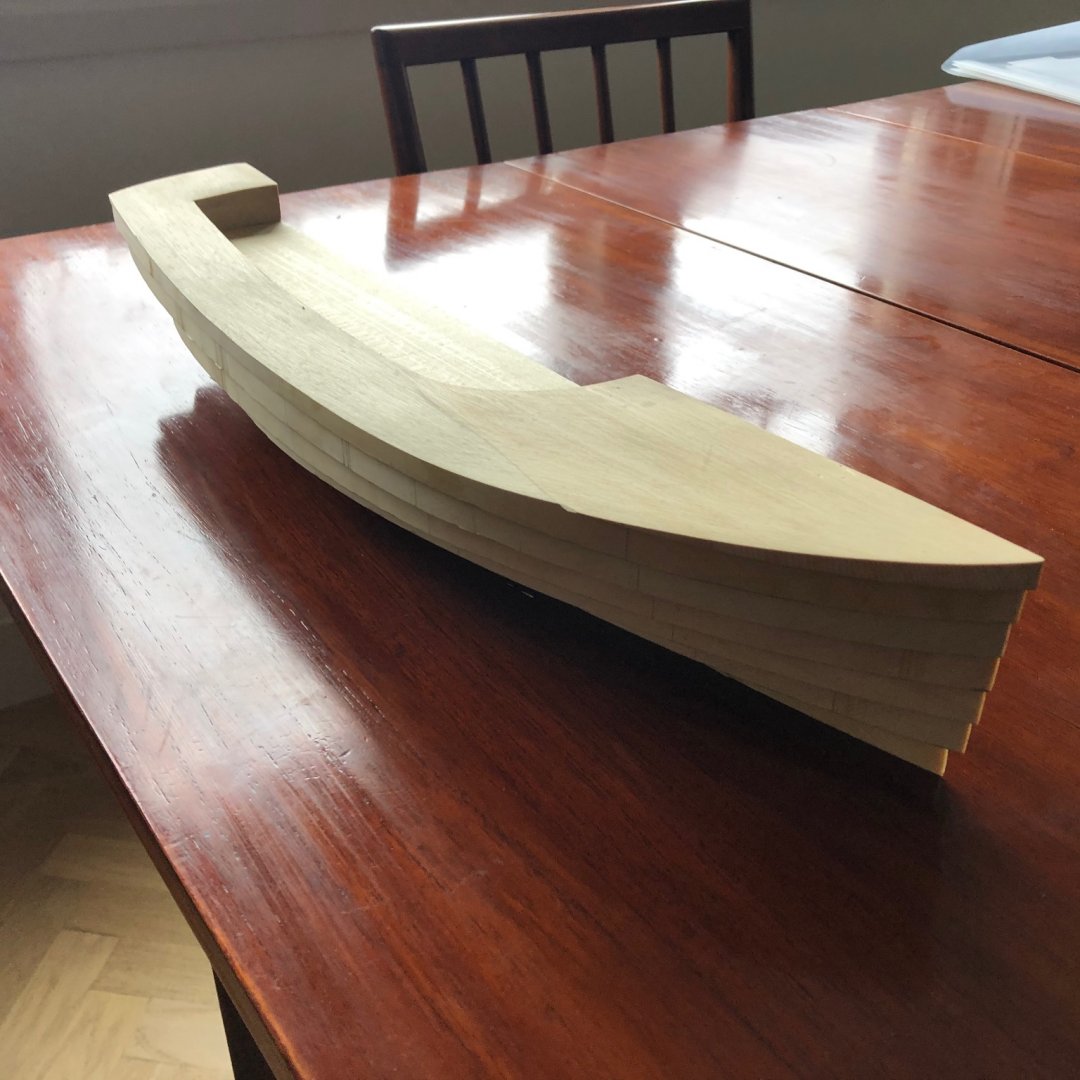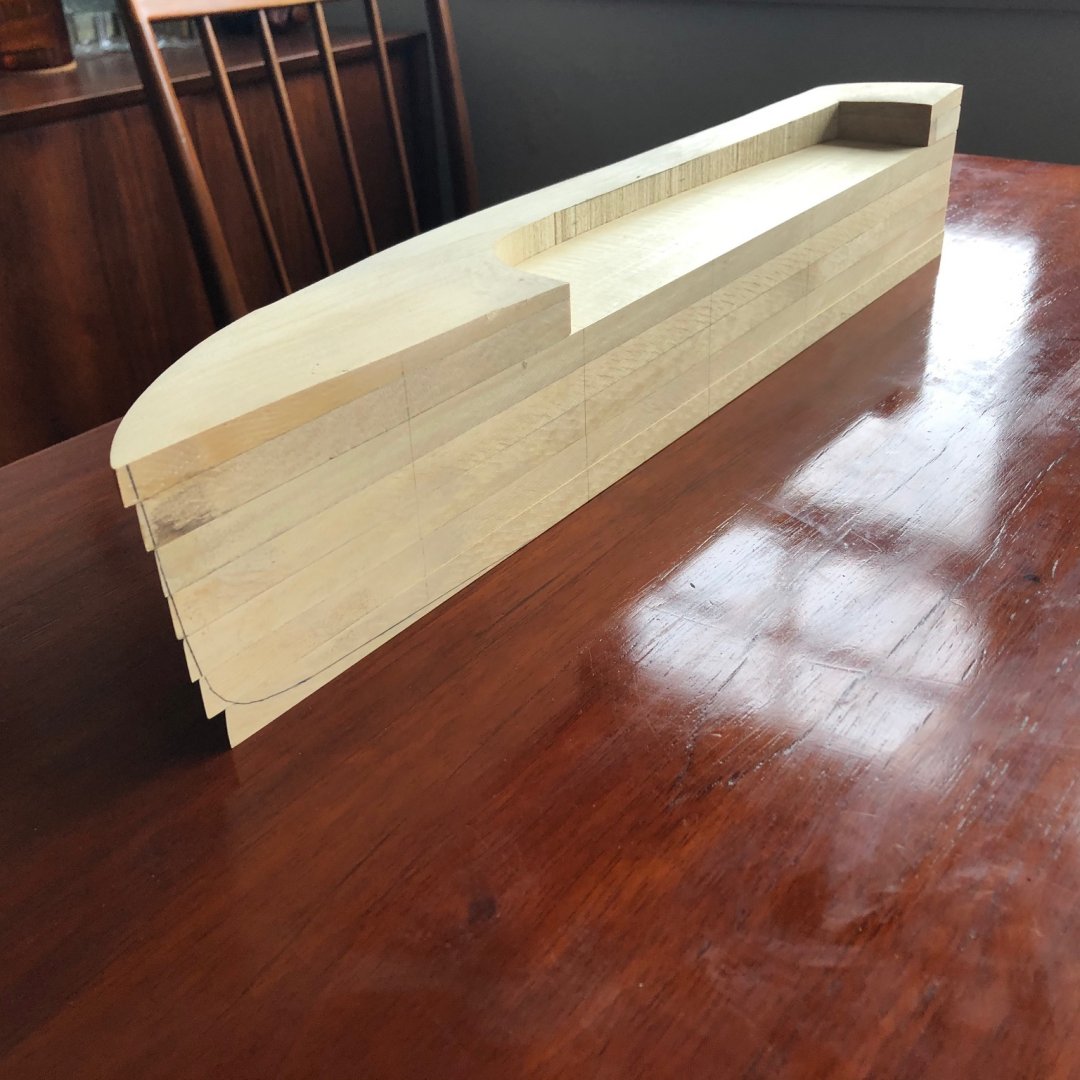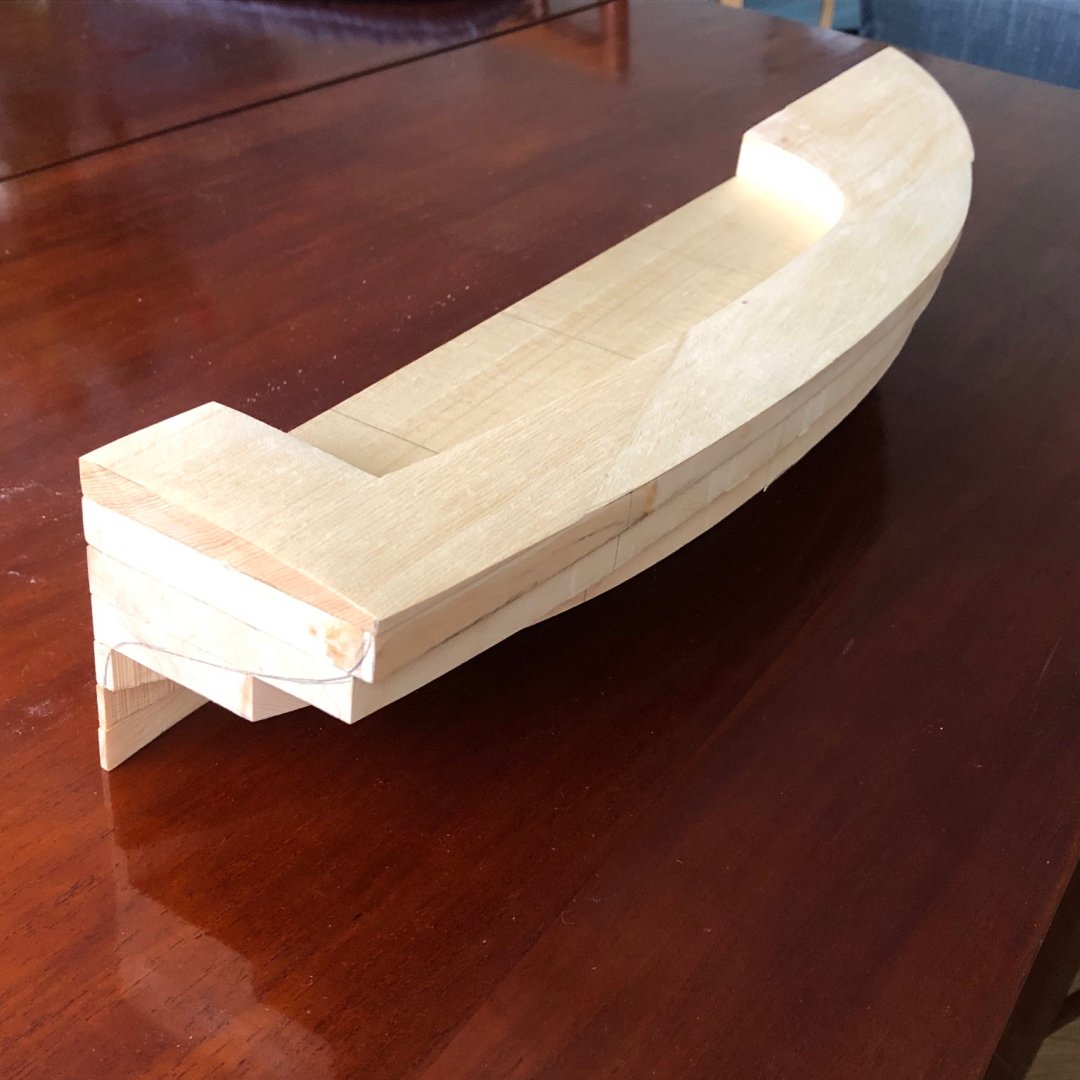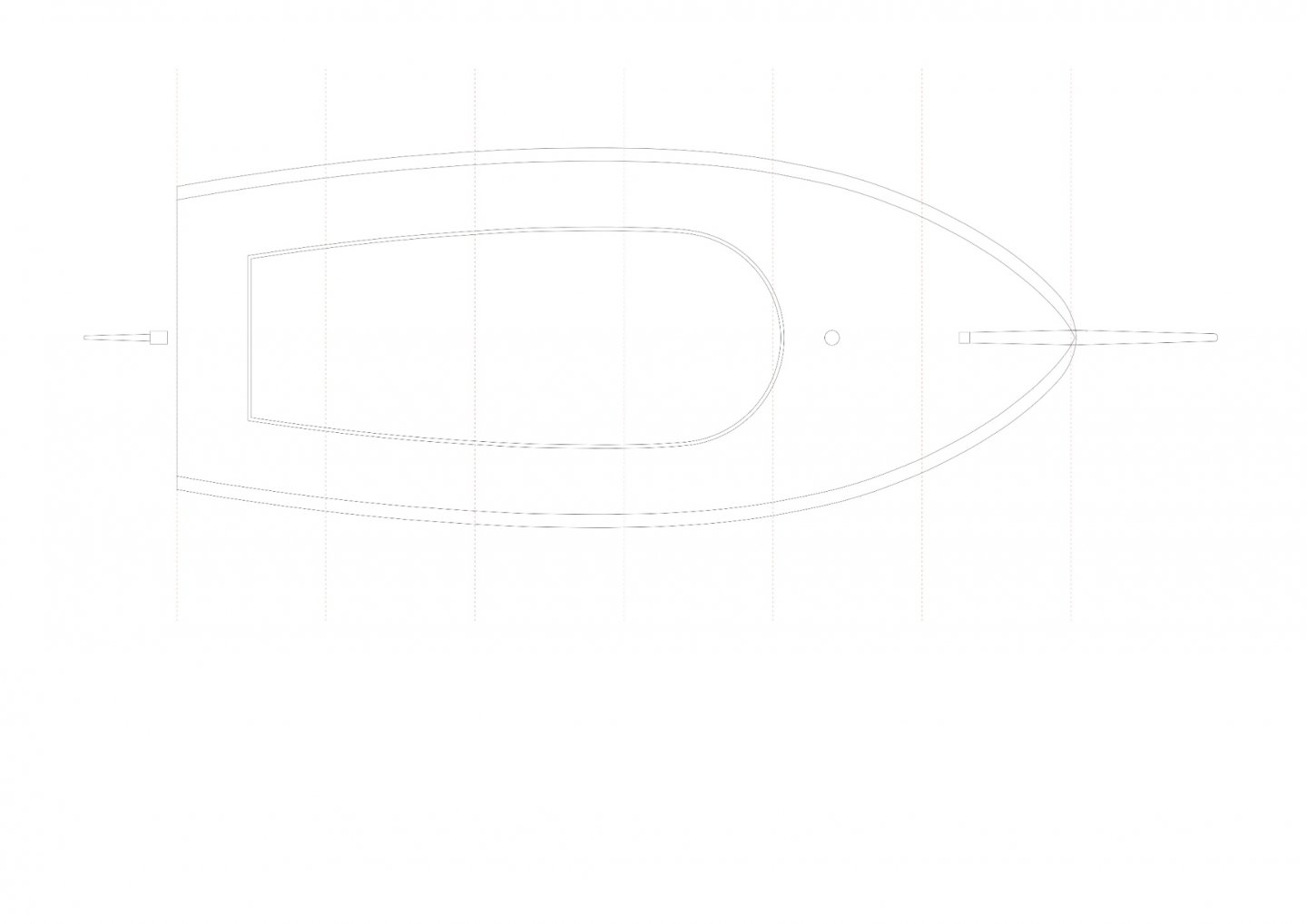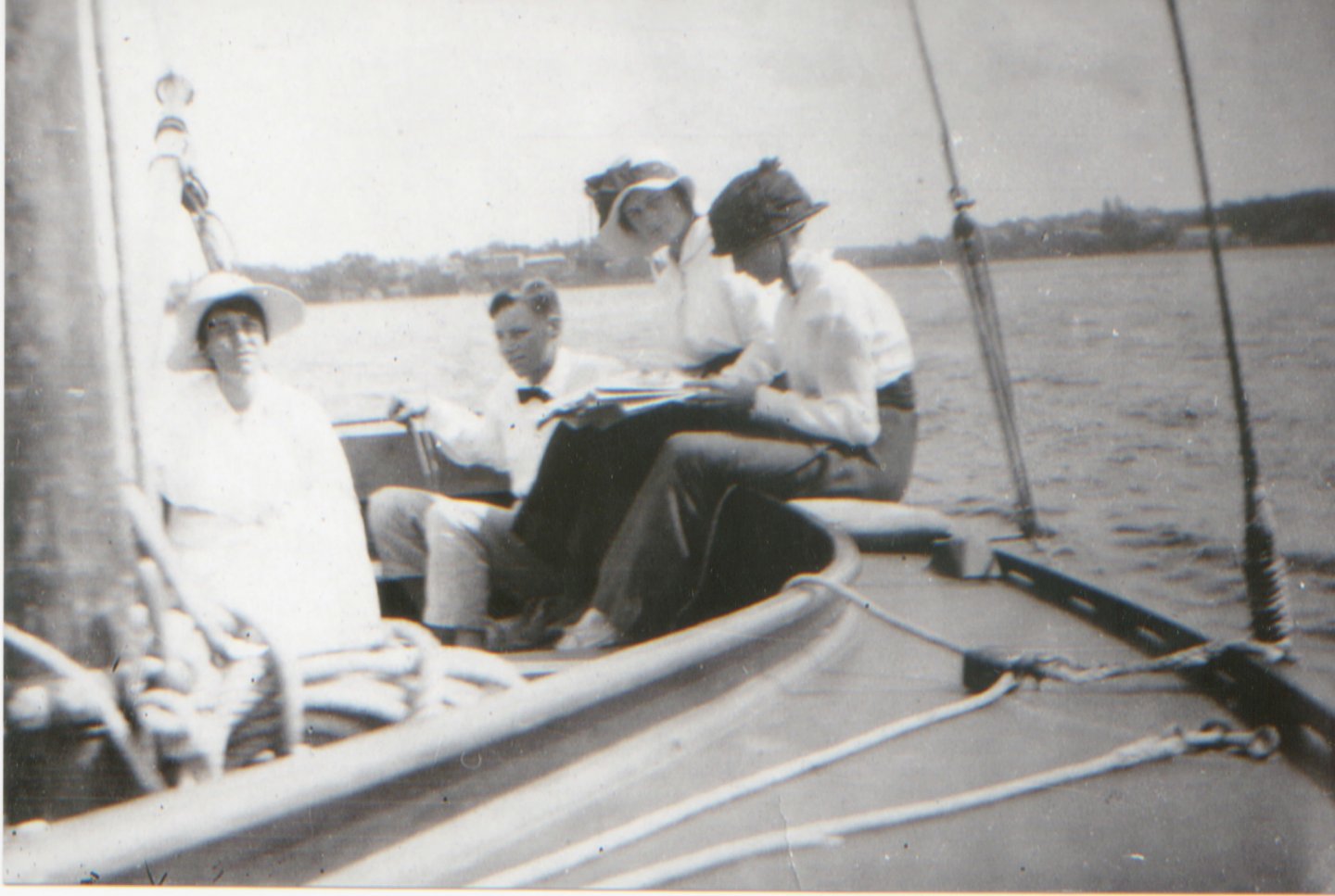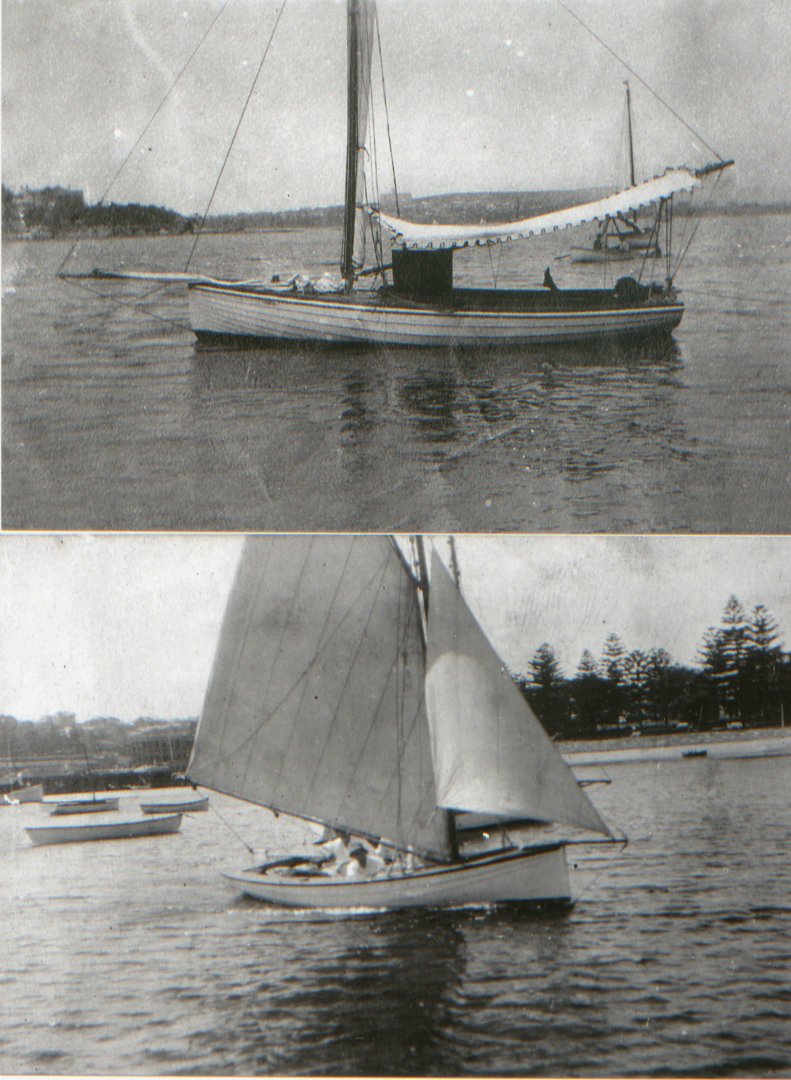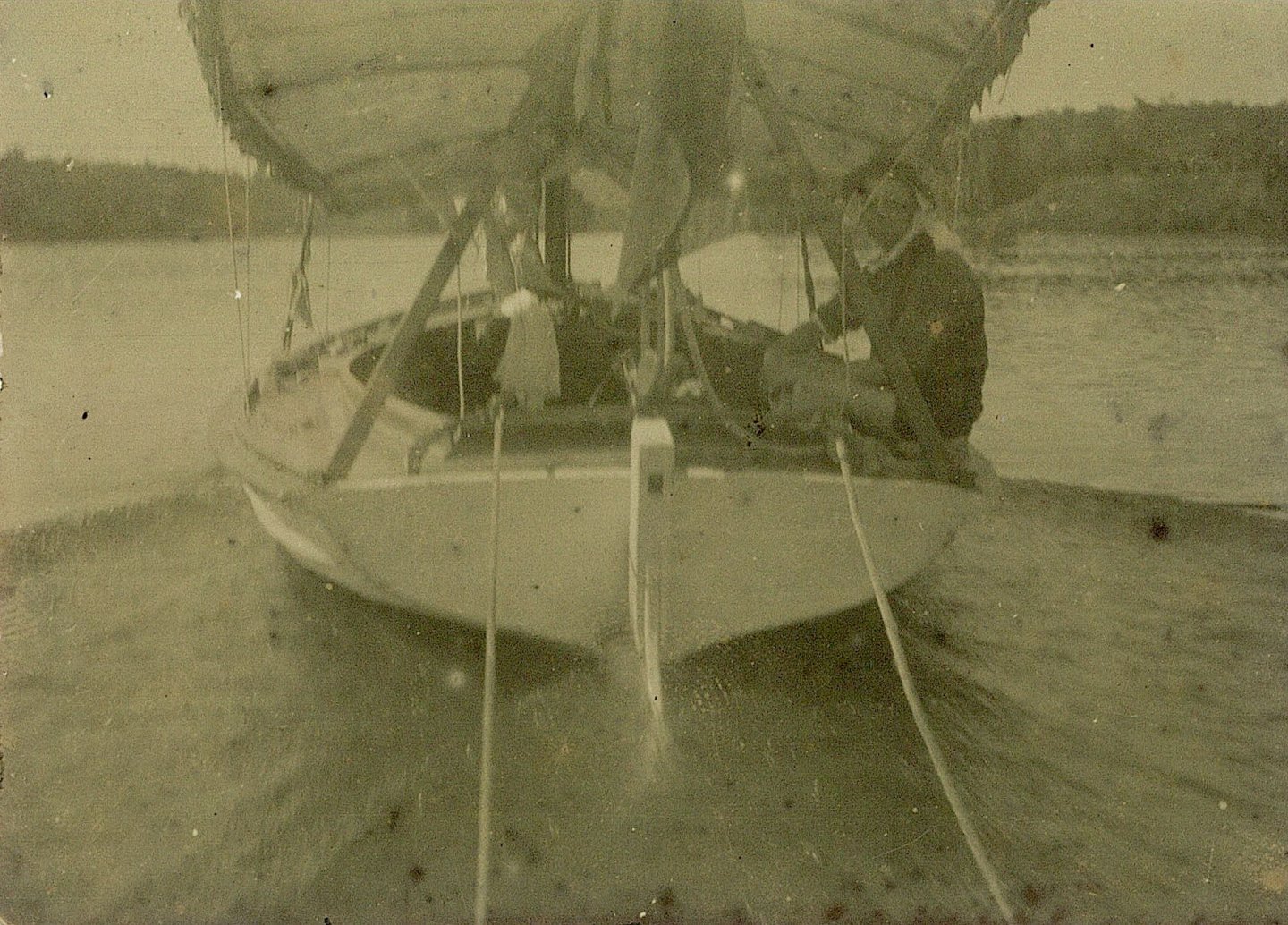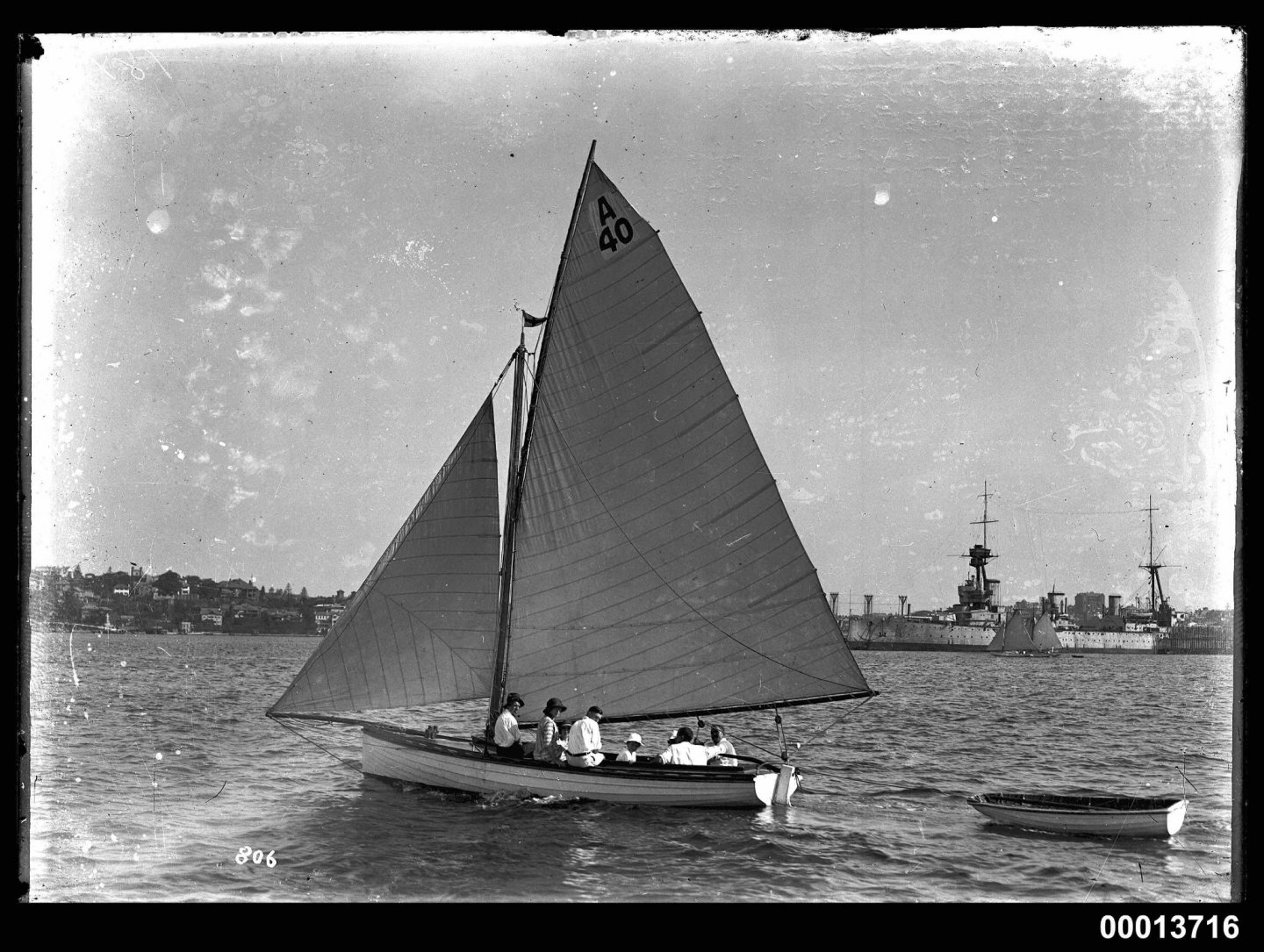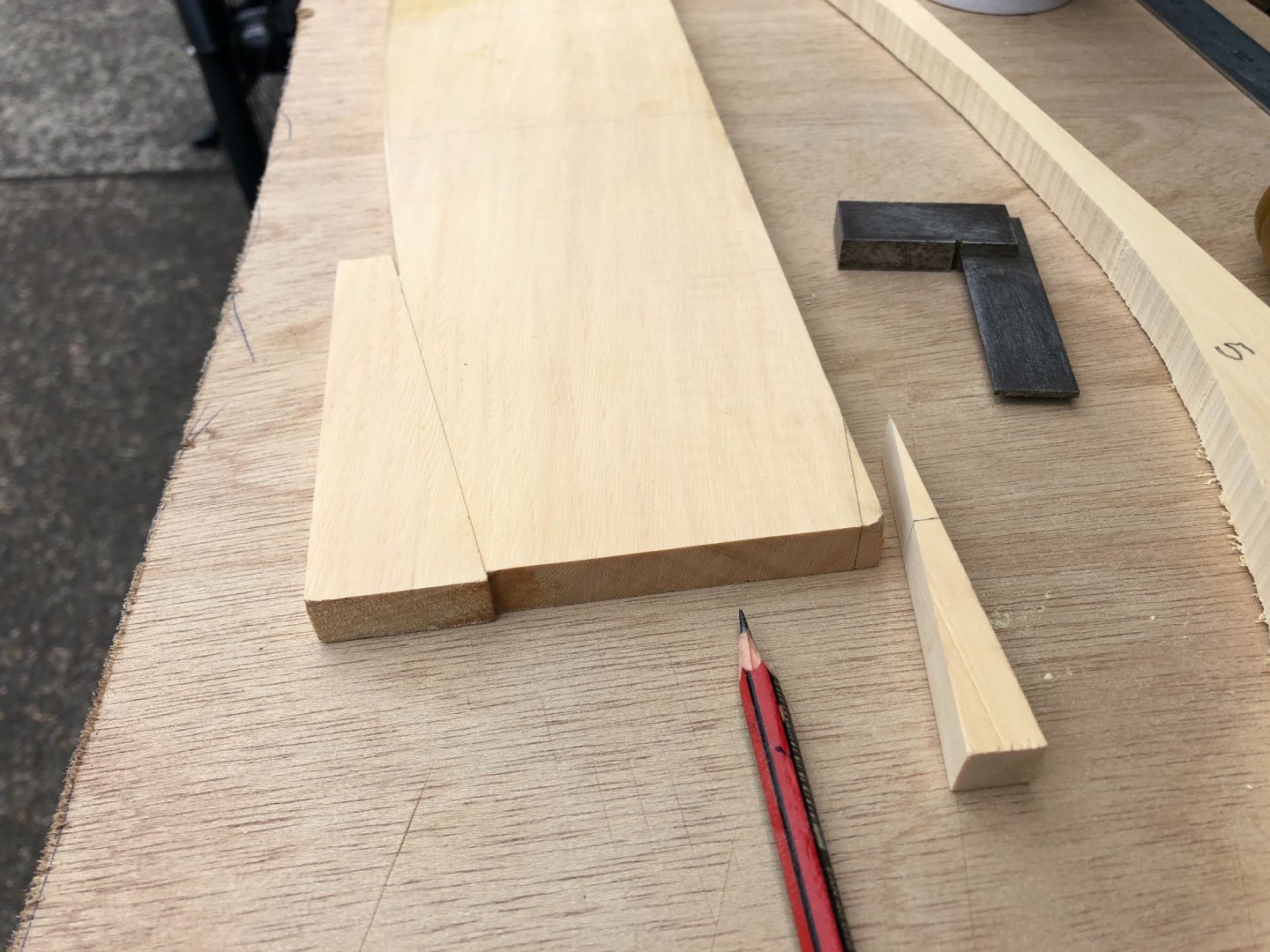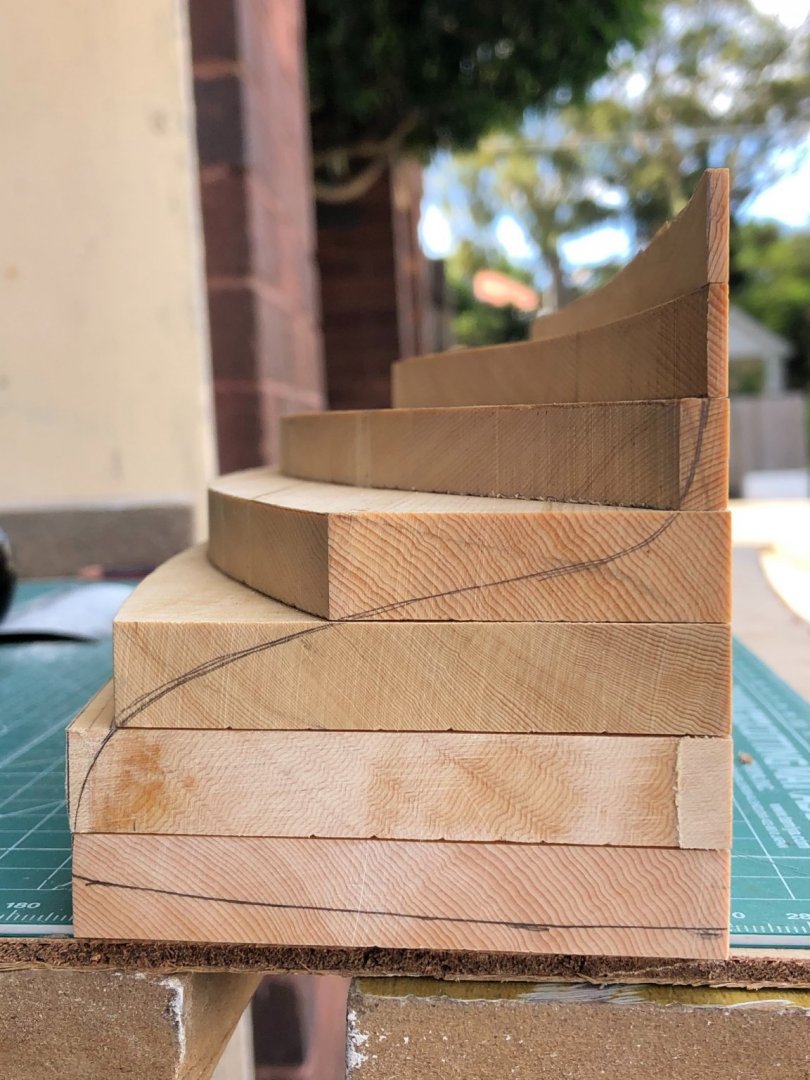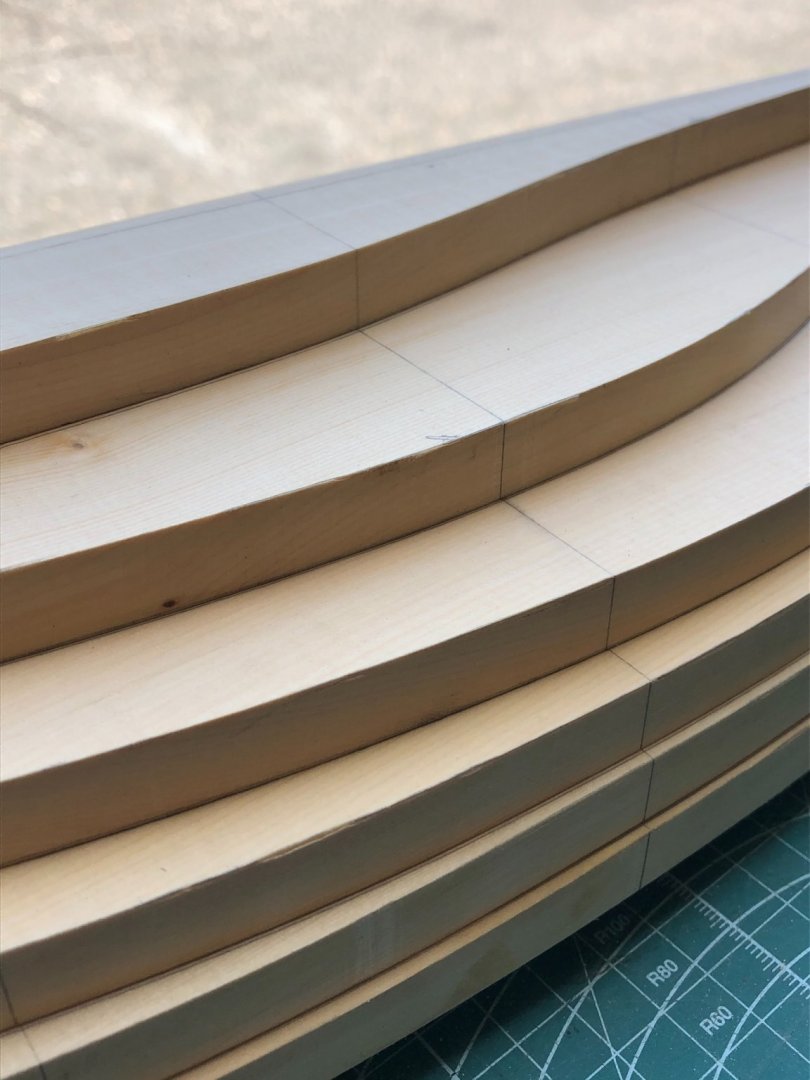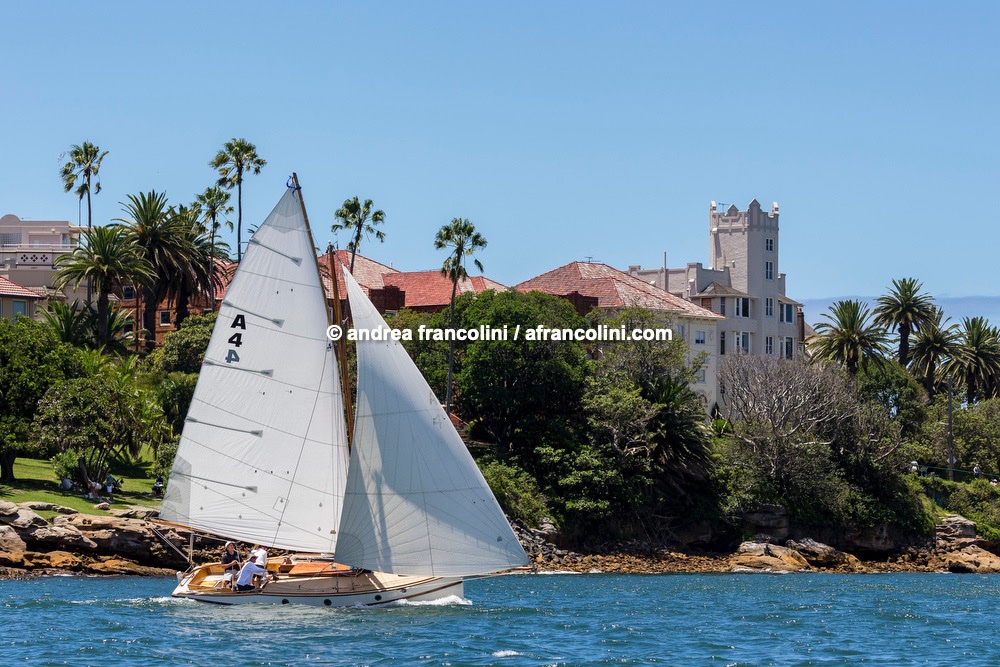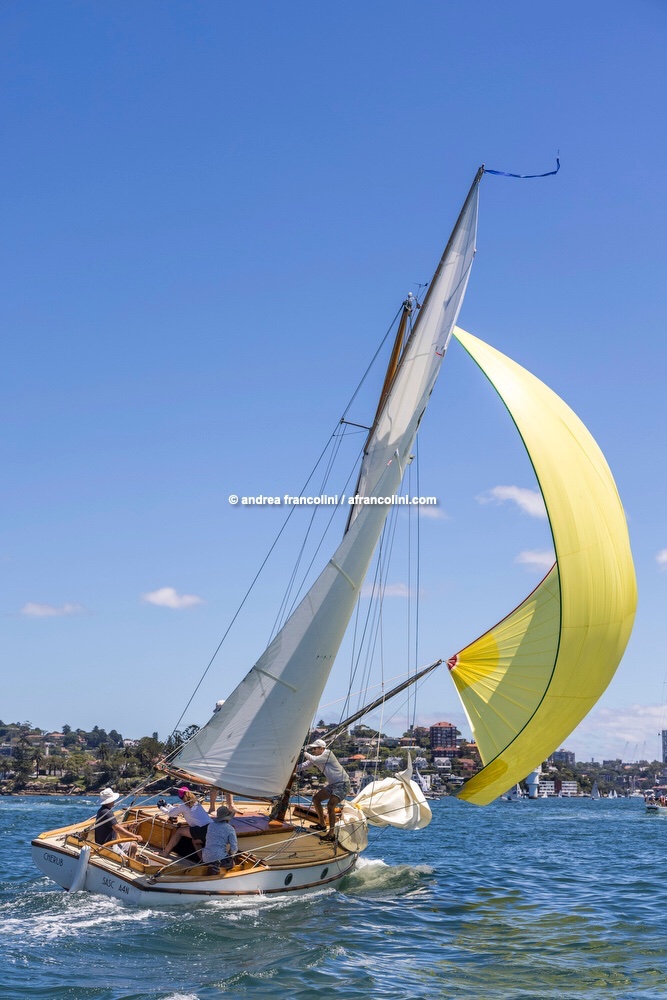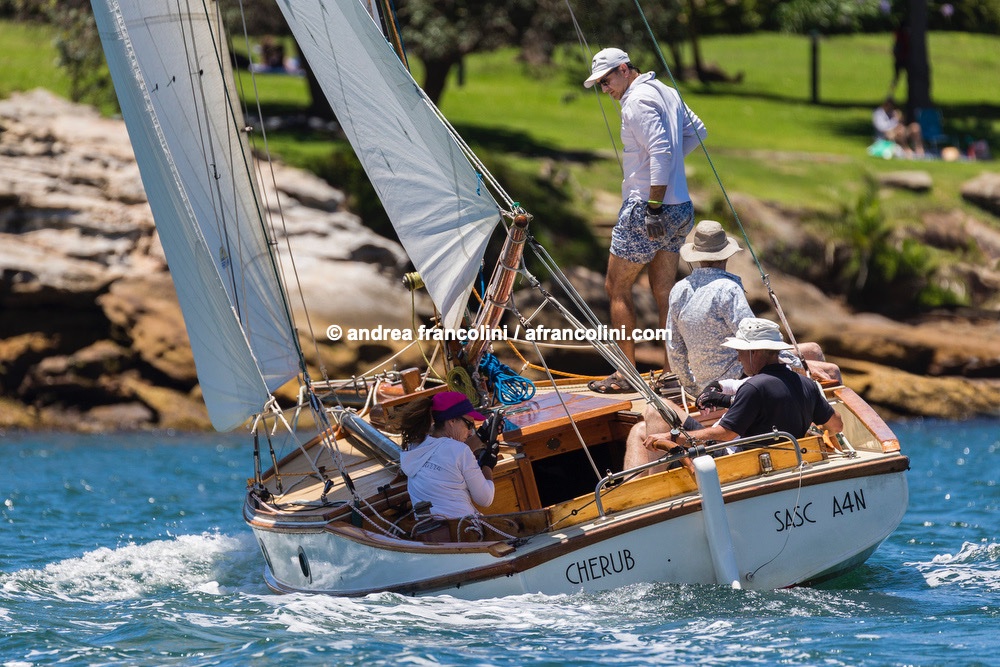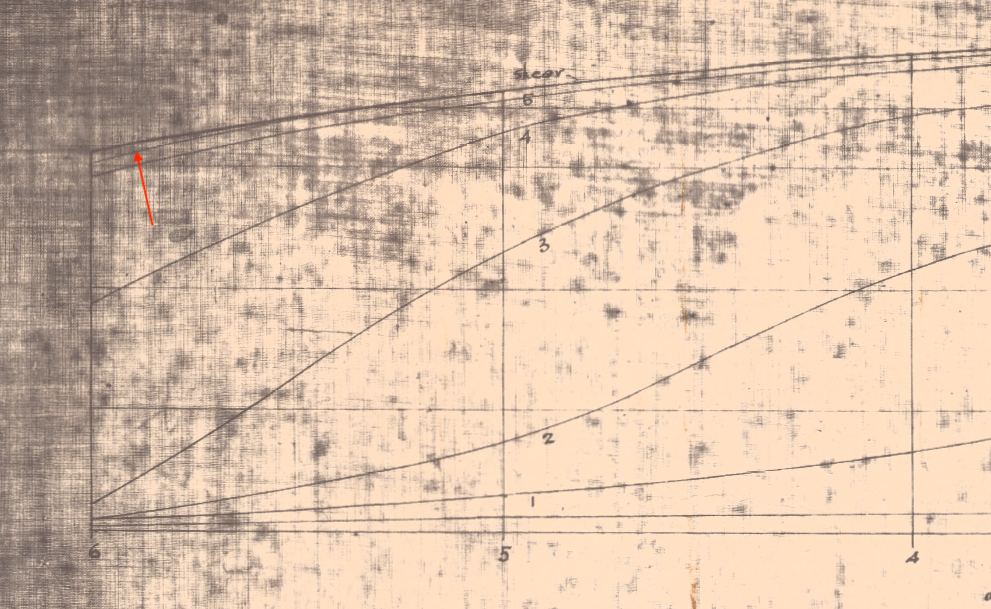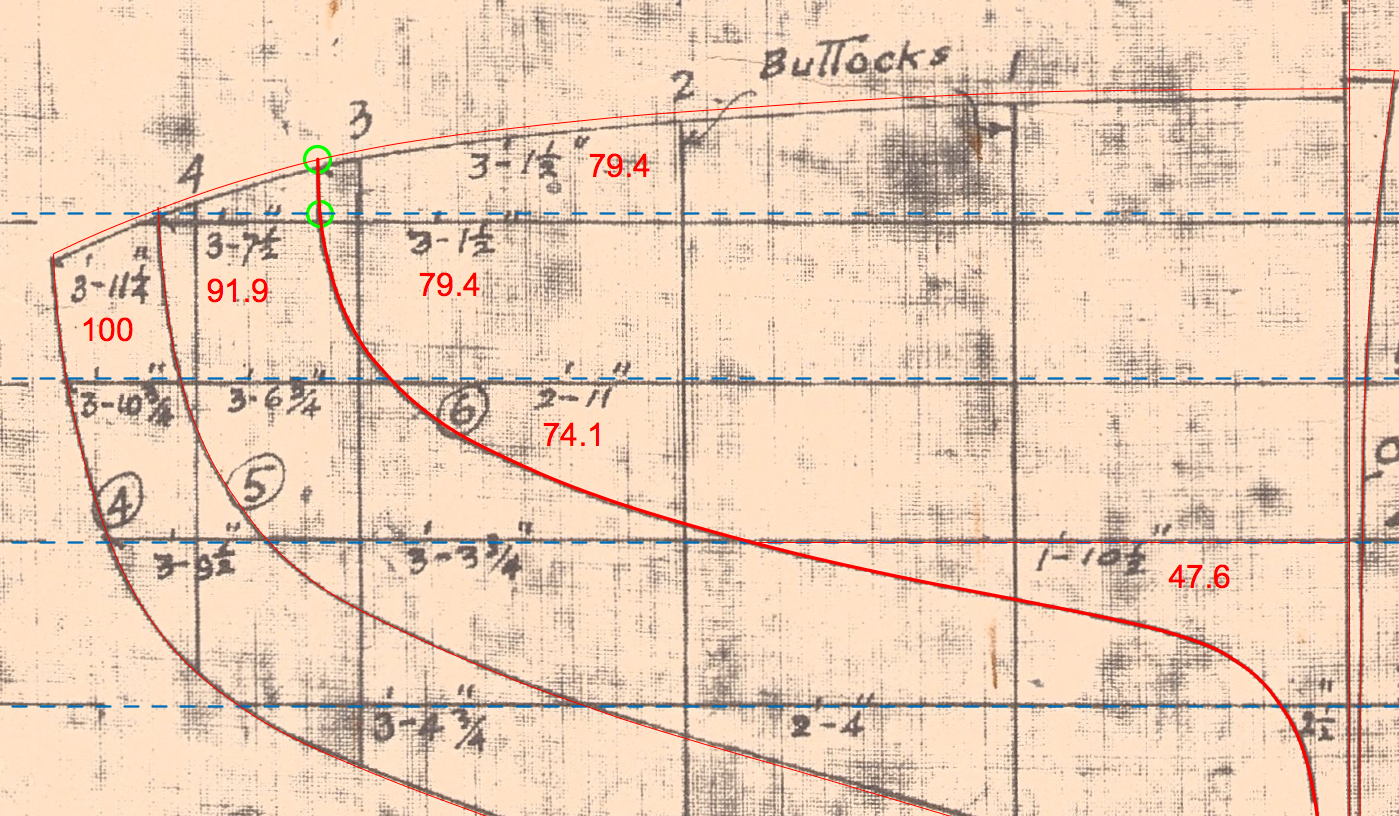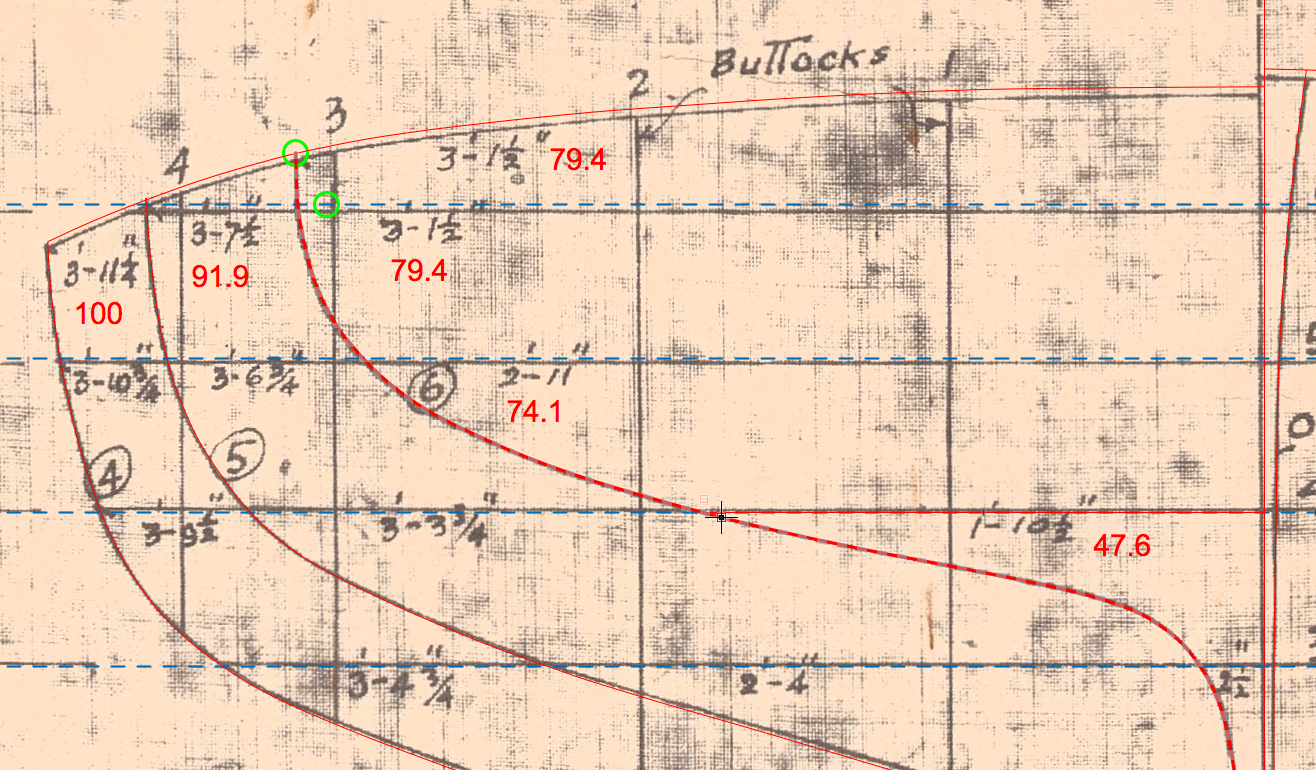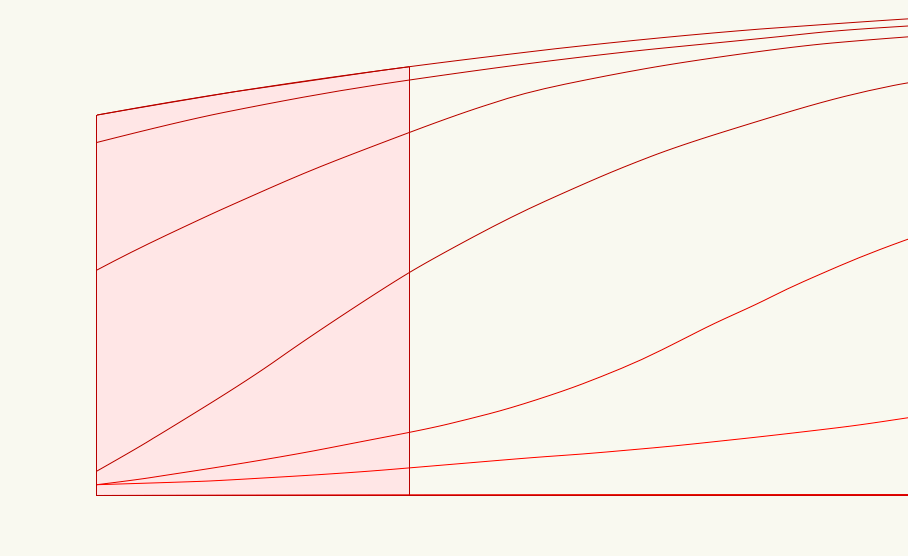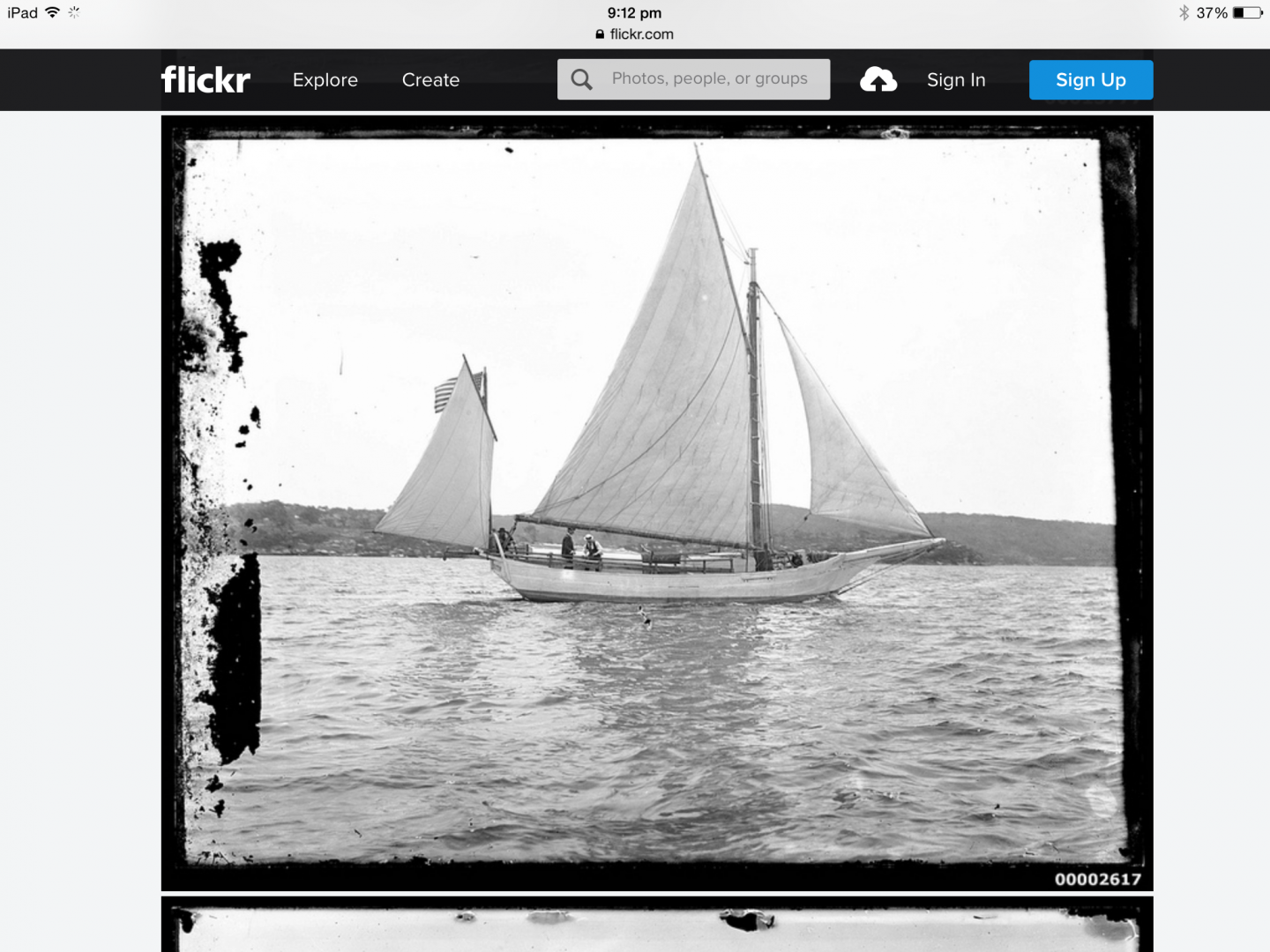-
Posts
818 -
Joined
-
Last visited
Content Type
Profiles
Forums
Gallery
Events
Everything posted by Mark Pearse
-
Golly - that's a remarkable boat. The hull appears to be very narrow near the tiller, & it must make some interesting moments for the helmsman when making a sharp turn.
- 179 replies
-
- longship
- Helga Holm
-
(and 1 more)
Tagged with:
-
lovely work Tobias; & the real oarlock is art & engineering
- 179 replies
-
- longship
- Helga Holm
-
(and 1 more)
Tagged with:
-
Hello Tobias Is there any evidence that they protected the planking from ballast?
- 179 replies
-
- longship
- Helga Holm
-
(and 1 more)
Tagged with:
-
I think this an inwale - on the inside of the planking & aligns with the gunwale on the outer side of the planking.
-
Hi Steve Yes, that's correct & Ian's boat is closely based on Ranger (her lines are a bit fuller than other versions of Ranger). If you search "youtube Ian Smith wooden boats" you'll find his channel, including recent videos on the Ranger build. My photos below are about 2 years ago. This video is from several weeks ago https://www.youtube.com/watch?v=DlJK3pfdWBs
-
Hi Hakan The rivets have been very successful. Does the lump on the top of the keelson have any function apart from being the middle bearing of the floor beam? I could see something similar in Woodrats build. Also, it's surprising just how quickly the halyards wear the keel away, I wonder what they did when it was really wearing out - whether they replaced a large piece of keel or added a sacrificial piece.
- 179 replies
-
- longship
- Helga Holm
-
(and 1 more)
Tagged with:
-
Thanks everyone The sanding is well progressed, I think hand sanding is the only way to do this. It's close in most areas now, time to keep a sharp eye on the shape. Fortunately a real shipwright (Ian Smith) made a half model of this boat & I've borrowed it, that will help a lot. I'll put up a photo. To even out hills & divots I used a piece of 1.5mm thick styrene that is a bit flexible & wrapped the sandpaper around it. A friend makes architectural models so I'll go & get some thinner stuff as well, to help with the concave sections. Especially the turn of the bilge near the transom. And the bow still needs that patch....
-
Thanks, an interesting photo. That scenery brings many memories to me, I went to the large island of Avenamaa (Åland) by small motor cruiser, as part of a 2 week trip through the Finnish south western archipelago from Helsinki. I later found out that the sailing trading vessels to & from Australia/Europe still operating after WWII were owned by a person or business on that island. Another fascinating thing was the video earlier in your blog; you can see that the square sail is very adaptable & the shape can be easily tweaked - flattened etc. When the boat was sailed without ballast, did you find that it rolled more suddenly? Say when a wind gust came along.
- 179 replies
-
- longship
- Helga Holm
-
(and 1 more)
Tagged with:
-
thanks everyone Amazing, a sunny day. The rain has been huge, much of the NSW coast has had over 400mm of rain in just the last week, & some places over 1m of rain in one week. Incredible volumes of water. But .... being selfish for just a moment, the sun certainly helps with taking photos. I started shaping the half model lifts. I kept a lines drawing nearby to make sure I knew whether the shape between the edge & the pencil line was straights, concave or convex. When it was clearly getting close, but harder to remove more timber with certainty, I glued them together. It's still rough, but most of the timber removals been done. In fact slightly too much on a couple of spots at the bow - patches required. Sadly the sweet lines don't show yet. It may need to be mounted for them to show. I'm considering mounting it on a reflective surface. Not mirror, as there's a visual gap due to the glass thickness. I'm going to investigate polished stainless, even though the colour is a bit grey, the salty humid air at the sailing club wall would mean chromed brass would need frequent polishing. Next step is sanding & more sanding. Then shaping added details. Too much timber removed......
-
Hi bolin, I just went through your whole build, a fascinating subject & you are doing a beautiful job. The builders of this really boat seemed to know exactly how light they could go - the method of frame supports (Post 70) for the upper planks is so delicate & beautiful. The very shallow cross sectional shape appears somewhat unlikely & earlier there was some brief discussion on just how seaworthy this craft might have been - however that photo of the heavily loaded Norwegian vessel shows just what similar vessels are capable of. Also, I have come to appreciate how seaworthy a shallow light craft can be.
- 179 replies
-
- longship
- Helga Holm
-
(and 1 more)
Tagged with:
-
The question of volumes to scale seems to show how we tend to see scale as a linear dimension. We don't really see that for a model of 1:10, areas are at 1:100 scale (eg: a sail), & volumes are at 1:1000 scale (eg: ballast or hull volume). So it is curious that it still looks right. Hakan, I think what you have done is authentic.
-
Hakan The hull shape reminds me of a pilot boat done for the Finnish archipelago by Colin Archer. Beamier & shallower than the Norwegian ones. I think she is called Pitkapaasi & maybe 30', so much bigger. However the similarity of hull shape is interesting - & both are very beautiful. A very enjoyable build to follow. Mark
-
thanks everyone Keith, we've never broached Cherub, they will go where you point them if your arms can manage it. Anyway, back to the scale world, I've shaped the top part of the model. The top two lifts were glued together because the deck shape went across both pieces of timber. Unfortunately the top timber piece has a few wiggles in the grain & the hand plane did not like them at all. I removed most wood with sawn lines & a chisel. And finished with a powered sander - it's an angle grinder with an attachment that gives a 1" wide belt sander. Starting to look like a boat.
-
Hi Tony, Yes I know the sky-blue Byzance. This half model is to be an addition to our trophy wall, the first Karoo trophy race was held this year Sunday 21st February, won by the gorgeous Peter Cole signed Tanami.
-
Using available information I've drawn up my estimate of the main parts of the Karoo. This is what I came up with, I've only drawn the details that I will be showing. I used a mix of original Karoo photos & some of another notable open boat of a similar size & vintage, a locally very famous boat 'Vagabond'. There are very few, & not very detailed images of the Karoo, so I've relied quite a bit on the Vagabond images. The designer of Karoo had previously owned the Vagabond. There are many similarities, such as a short & slightly curved bowsprit, tall toerails with numerous drain holes This stern shot of Karoo was useful to estimate the width of the side decks, the gunwale width, & the rudder, also the coaming height & shape. These shots of the Vagabond were useful to see various details, which helped to confirm various things The last shot is a beauty, the Vagabond is such a pretty boat, & is still around. I'm pretty happy with this plan setout, it "looks right" to my eye. I redid the top lift for the model & glued it to the second top one. I'll next scribe the cockpit opening onto that & cut it out. all the best Mark
-
Hi Steve Yes, Cliff was a gifted amateur designer. I hope to be smelling the odd sweet scent of freshly cut Huon this weekend.
-
Thank you all, & especially Keith - fortunately I wasn't drinking anything when I read that. Vaddoc, thank you - & one note on what you said: most boats built here at that time were done on a tight budget, & very few have exotic fitouts etc. The connection with what you said is that the bows & sterns are usually plumb - vertical. You get maximum boat for your timber that way. The 'lift' #6 (not sure if there's a technical name) needed to be corrected, as the previous post. I did that & also dropped the piece, so two minor repairs. Below: the correction timber glued on, & the new ding on the bottom right, with a piece getting ready to be glued. Below: now that's better. Transom pencilled on. Fascinating to see how slow Huon Pine grows. The lifts are about 12.5mm thick. I am pencilling on all the positions of the mould, as shown on the drawings. So that when I'm rough shaping the lifts, I know if it's concave, convex or straight. Before I start shaping them I need to try to setout the cockpit. I plan to show some basic details such as cockpit coaming, low part of the mast, rudder & tiller, gunwale. So, I'm going to hit the drawing board & see what I can work out - or guess - for the above. Lastly, a bloke in a RIB was following our sailing race in January & took some lovely shots of our 24' gaff sloop Cherub. Of interest to any boat lover, but in terms of this blog, it was also designed by the designer of Karoo & the next boat after Karoo. So, if you'll indulge me..... Approaching the start line. Struggling to control the spinnaker pole on a tight shy run. Before the start.
-
I started to pencil on the mould locations on the timber lifts, to help when I do rough shaping, of whether the sanded shape is straight, convex or concave. I picked up an inconsistency in the drawings. It goes to the issue of which drawing do you give priority to when there's a discrepancy? In this case its pretty easy, fortunately. Also the fix should be pretty straightforward. On the plans, this line was used to cut the the lift #6, it is the highest of the full length pieces. The red arrow points to it. If you look at the transom, that line is pretty much vertically under the gunwale line. The small green circles show where the plan lines meet the transom. Numbers in red are the widths at 1:12 in mm. Here's where the transom shape would have to conform to, if I was following the plan lines. It's a lovely transom shape, it's an easy one. So, the plan lines will be adjusted to suit, as below, ie: following the gunwale. The pink is the shape of the top lift at the stern. Good news is that I kept all the timber offcuts, & I won't recut the whole piece, I'm going to carefully add timber from the offcut.
-
Hi Rich I'll attach a photo below from when the Spray was in Sydney. The photo has quite good detail, I hope it's interesting if not actually useful. I believe he was given new sails here & these do look pretty good. As an aside, our sailing club has a "Captain Slocum Trophy Race", the connection is that a member of the club was thought to be the first person aboard the Spray in Sydney. When he was about 10 & was fishing with friends near the heads when an unknown boat came in. They rowed over & went aboard. I am friends with the son of that boy, the son is now around 95 - at the last count..... Mark
About us
Modelshipworld - Advancing Ship Modeling through Research
SSL Secured
Your security is important for us so this Website is SSL-Secured
NRG Mailing Address
Nautical Research Guild
237 South Lincoln Street
Westmont IL, 60559-1917
Model Ship World ® and the MSW logo are Registered Trademarks, and belong to the Nautical Research Guild (United States Patent and Trademark Office: No. 6,929,264 & No. 6,929,274, registered Dec. 20, 2022)
Helpful Links
About the NRG
If you enjoy building ship models that are historically accurate as well as beautiful, then The Nautical Research Guild (NRG) is just right for you.
The Guild is a non-profit educational organization whose mission is to “Advance Ship Modeling Through Research”. We provide support to our members in their efforts to raise the quality of their model ships.
The Nautical Research Guild has published our world-renowned quarterly magazine, The Nautical Research Journal, since 1955. The pages of the Journal are full of articles by accomplished ship modelers who show you how they create those exquisite details on their models, and by maritime historians who show you the correct details to build. The Journal is available in both print and digital editions. Go to the NRG web site (www.thenrg.org) to download a complimentary digital copy of the Journal. The NRG also publishes plan sets, books and compilations of back issues of the Journal and the former Ships in Scale and Model Ship Builder magazines.


